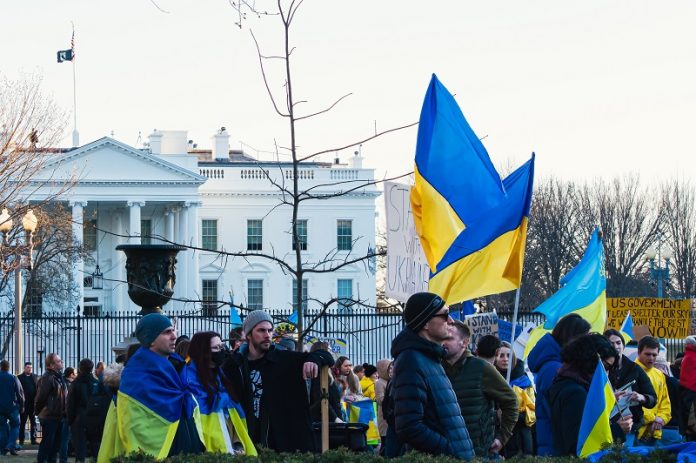
As peace talks between Russia and Ukraine unfold, one possibility is that Ukraine becomes a neutral state.
Negotiations have been taking place this week in Istanbul, Turkey, amid an apparent tentative stalemate between the two sides.
Ukrainian neutrality is reportedly on the table. But a neutral Ukraine wouldn’t necessarily ensure peace in the region and, in fact, may only heighten tensions in the future, says Mai’a Cross, the Edward W. Brooke Professor of Political Science and International Affairs at Northeastern.
“Neutrality means Ukraine would effectively forfeit its ability to have a foreign policy of any meaning or significance,” Cross says.
“It would mean Ukraine would not be able to join NATO or any other political alliances, or host foreign military bases. It may even mean demilitarization.”
As a result, Cross says Ukraine would need security guarantees from other countries, as neutrality would mean effectively giving up its ability to ensure its own national security; but the specifics of that arrangement, in terms of its own government and its relationships with other countries, are contingent on the ongoing talks.
Neutrality is recognized and regulated through two treaties adopted at the Second Hague Peace Conference in the Netherlands in 1907.
The “law of neutrality,” as it were, applies only in the context of international armed conflict. Under the treaties, neutral states pledge they won’t interfere in conflicts involving belligerent nations.
But it “doesn’t necessarily guarantee peace,” Cross says, because of the complicated entangling of other countries, acting as security guarantors, that would result should a nonaligned Ukraine face aggression from a neighbor—namely, Russia.
For example, if a NATO country became a security guarantor, Russian aggression against Ukraine may force the whole of NATO into war with Russia, Cross says.
After the fall of the Soviet Union, Ukraine declared its “intention of becoming a permanently neutral state that does not participate in military blocs and adheres to … nuclear free principles.”
The former Soviet nation gave up its nonaligned status in 2014 following Russia’s annexation of Crimea. Ukraine also announced its intention of pursuing NATO membership during that time.
But now, after more than a month of war, Ukraine’s pursuit of neutrality as a path to ending the conflict reads more as a form of surrender, Cross says.
“It feels to me like a combination of surrender and just kicking the can down the road,” Cross says.
“In a way, neutrality sounds so innocuous, but it carries with it the potential for conflict down the road because, at some point, there has to be some formal security guarantee.”
Ukrainian resistance has been holding strong, even ramping up in recent days to repel invading Russian forces and push them back outside the Ukrainian capital of Kyiv.
Although reports of Russian aggression in other Ukrainian cities continue, Kremlin representatives said on Tuesday they would drastically reduce military operations around Chernihiv and Kyiv.
That was until it was reported on Thursday that Russian troops are, in fact, not standing down, but merely regrouping outside of Kyiv.
“According to our intelligence, Russian units are not withdrawing but repositioning,” Jens Stoltenberg, NATO’s secretary-general, said during a press conference on Thursday, according to the New York Times. “Russia is trying to regroup, resupply, and reinforce its offensive in the Donbas region.”
Written by Tanner Stening.



